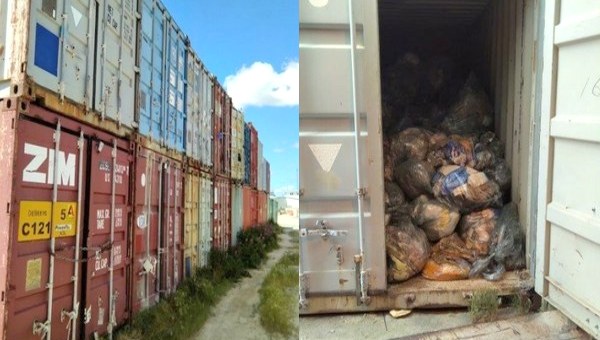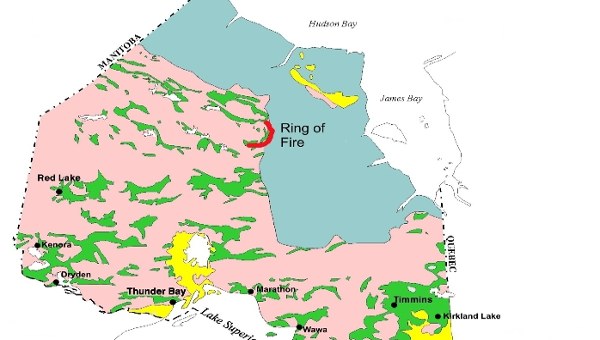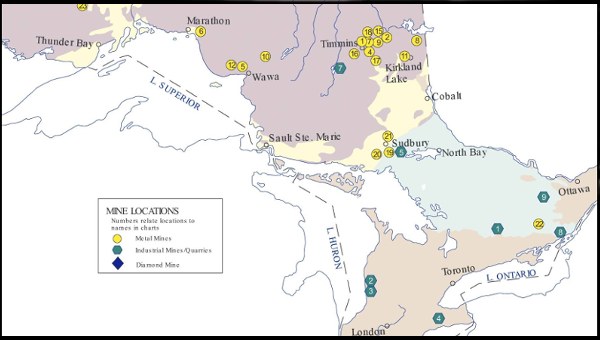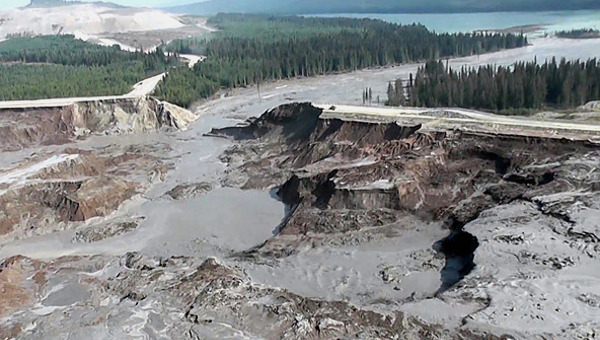On June 15, 1841, the newly established Legislative Council of the Province of Canada – a body of twenty-four appointed lawmakers – was gathered in its chamber in Kingston. Its speaker, a businessman and nationalist named Austin Cuvilliers, began the day’s proceedings by reminding his peers of their mandate: “Many subjects of deep importance to the future welfare of the Province demand your early attention,” he said, but the most important of them “is the adoption of measures for developing the resources of the Province. The rapid settlement of the country, the value of every man’s property within it, the advancement of his future fortunes are deeply affected by this question.” 1
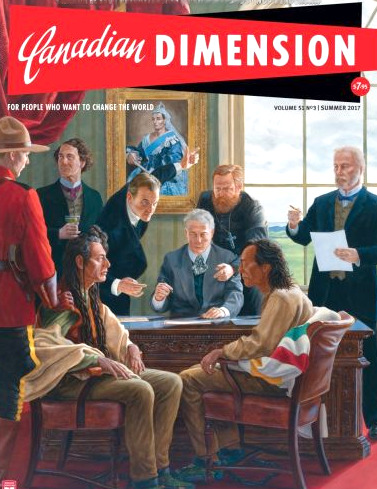
Three months later, the legislature created what would become one of Canada’s most important institutions in promoting those objectives: the Canadian Geological Survey, whose purpose was and remains the mapping of geological resources for private exploitation. 2 At the time, it was only the second institution of its kind in the world, following on the heels of Britain’s Geological Survey by only six years. But in the Canadian context, it was also a precedent-setting institution in its own right, because it was very much on the vanguard of settler-colonial strategy. Australia, for instance, did not create a geological survey until a decade later, and the United States did not do so until 1879.
One hundred and seventy-six years later, the Canadian state remains more committed to – and dependent upon – the mining business than any other government in the world. Three-quarters of the world’s mining companies today are headquartered in Canada, and approximately 60 per cent of them are listed on the Toronto Stock Exchange (TSX), whose website consistently brags that they broker more than half of global investment in the industry. 3 The bulk of this investment comes from outside of Canada, while the majority of the production it finances also occurs abroad; the TSX is simply a safe and uniquely accommodating conduit for extractive capital.
Outsiders to the world of finance might worry about what it means for Canada to have so many of its eggs in one industrial basket. But from the time of its inception the Canadian government has actually struggled to secure this intimate relationship with the industry, and that strategy has in fact generally succeeded in promoting the state’s central objectives of white settlement and capital expansion. Those objectives, of course, extend far beyond the mining business. They have informed almost every aspect of Canadian government policy, and at a very general level they have been associated with countless humanitarian atrocities – above all the displacement and dissolution of so many indigenous nations.
But the long and ongoing history of Canadian mining has played a strikingly prevalent role in that broader trajectory. From the nineteenth-century gold rushes to present-day multinational production chains, Canadian miners have all too often committed or condoned acts of violence against rural and indigenous peoples – sometimes in the name of securing contested land, and sometimes simply because of the ugly dynamics that emerge when hundreds of wayward men descend on small and isolated communities.
Carving Out Canada’s Niche
These patterns have been well documented, most of all in recent years by the Ottawa-based research group Mining Watch. The bigger question – one that deserves attention amidst the hoopla of the sesquicentenary – is the question of how Canada historically obtained this special niche in the global economy.
The answer is that from the 1840s onward, the Canadian government developed at least six distinct institutions designed specifically to promote resource extraction both at home and abroad: the geological survey; free-entry mining laws; preferential tax policies; business-friendly conventions in the Canadian judiciary; generous diplomatic support; and the expansive structure of the Toronto Stock Exchange.
For Alain Deneault – author of Imperial Canada Inc. and other books on the industry – this uniquely extractivist environment marks Canada as what he calls an “accommodation state”: a country that has committed to offering political and financial concessions to a specific industry in the era of corporate globalization. In other words, he says, Canada is “a legal haven” for the industry, “a country where no real strong constraints apply to mining corporations.”
The Geological Survey was simply the forerunner of this political system, which has become increasingly elaborate over the decades. The Survey began promoting copper extraction in the Bruce Peninsula almost immediately after its establishment, and in the 1850s played an integral role in establishing the oil and bitumen business around what is now Sarnia. In 1867, the organization’s purview expanded massively, and its growing team of geologists proceeded to map petroleum and iron ore deposits in Ontario, coal in Nova Scotia, and copper in Quebec. 4
As Ottawa moved to sequester the massive western territories then controlled by the Hudson’s Bay Company, the Survey too turned its sights toward the west. In 1871, the Survey began to explore the geological formations around the proposed railroad route extending from Ontario to British Columbia, a region that gold-seeking whites had already begun to colonize en masse. These expeditions stoked early interest in the coal and petroleum deposits of Alberta and BC, as well as the mineral potential of several formations along the Pacific coast. 5
Confederation also laid the groundwork for the free-entry policies that would later develop across Canada. Under the terms of the British North America Act, minerals were handed over to the provinces, meaning that only they had the legal jurisdiction to grant or deny mining permits or tax mining activity. 6 In conjunction with Canada’s liberal trade policy with the U.S., the construction of this fragmented regulatory regime one hundred and fifty years ago has generated a business-friendly climate in which it is virtually impossible for the state to tax or regulate the extractive industry in any meaningful way. Ontario’s government in the 1880s, for instance, tried to develop a mining policy that would enable it to do just that, but it soon became clear that investors would simply move their business elsewhere. After a half-hearted attempt, Queen’s Park eventually capitulated with the Mines Act of 1906, which allowed miners to claim geological resources on virtually all public lands and First Nations reserves – a free-entry policy that profoundly undermined First Nations’ sovereignty, and virtually absolved the industry of any environmental responsibilities. 7
New challenges Face Old Hurdles
Over the past decade, some important amendments to Ontario’s Mines Act have enhanced corporate responsibility and First Nations’ jurisdiction. 8 Another progressive move recently came from the Yukon Court of Appeal, which in 2013 ruled against free-entry on First Nations’ land, prompting speculation that BC may eventually have to follow suit. 9
But the problem of regional (and international) competition for extractive investment remains very much in place today – a dynamic that puts even well-intentioned provincial governments in a deeply contradictory position. It means that although the principle of free-entry mining and prospecting is now being challenged in some provinces and territories, the government’s willingness and ability to tax the industry remains weak. Indeed, because any government’s ability to tax capital is always inversely related to capital’s ability to transcend governmental borders, the continual expansion of global trade networks throughout the past century and a half have gradually pushed Canadian tax policy in an increasingly business-friendly direction.
In some ways, this can be seen as a pattern of path-dependency throughout the history of Canadian capitalism: capital markets were heavily invested in resource extraction from the very beginning, and the Canadian government has therefore become increasingly congenial towards the industry over time. Were the state to suddenly antagonize the industry, the capital flight that would ensue could do serious damage to the broader economy, at least in the short-run.
This dynamic has arguably been the central determinant behind the historical trajectory of Canada’s capital markets, a trajectory in which those markets began as the conduit for domestic investment and gradually transformed into the primary conduit for resource extraction across the globe. Both the Montreal and Toronto stock exchanges – established in 1874 and 1875 respectively – were heavily invested in mining from their inception. By the early twentieth century Toronto had decisively become the industry’s favourite, given its near-total absence of financial regulations.
The TSX retained its tight relationship with the industry throughout the next century, largely by attracting huge quantities of U.S. capital into extractive projects at home. Motivated by the generous terms set by the provincial and federal governments, foreign ownership in the extractive sector (including both mining and petroleum,) rose to 59 per cent by 1960. 10 These terms included schemes in which profits were completely tax exempt in a mine’s first three years of operation, royalties were extremely low, and corporations were permitted to write off much of their asset values by claiming depreciation. 11
These policies almost exclusively benefitted the largest players in the market. As economist Eric Kierans noted in a report for the government of Manitoba in 1973, mining corporations in the province were earning massive profits of 33 per cent – funds that were almost entirely requisitioned by the four largest firms. (Indeed, over half of the active mining claims in Manitoba at the time were held by a single firm, Inco. 12)
In the nineteen-eighties and nineties the TSX began to solidify its position as the headquarters of the mining industry at the global level, in part by capitalizing on the congenial environment offered by the Canadian state, and in part by absorbing the world’s other major mining exchanges. Since 2001, the TSX’s parent company – the Toronto Market Exchange – has absorbed the capital markets of Vancouver, Montreal, and Calgary, generating a broad and liquid market exchange that operates across multiple political jurisdictions. 13
Business-Friendly Policies
A plethora of business-friendly legal reforms since the eighties have also helped the TSX to consolidate its position in the industry. Beginning in 1983, the Canadian government introduced a system of “flow-through shares” which provide a major tax incentive for investment in small mining firms 14 – a policy that the industry has hailed as a godsend, but that public-interest advocates have rightly criticized for draining government coffers. In fact from 2007 to 2012 alone, this policy has diverted an estimated $2.5-billion away from the public. 15
The Canadian state also began to situate itself at the centre of the global industry in the 1980s. Since the late 1940s, the Geological Survey had made extensive use of aeromagnetic survey technologies, which had enabled them to map Canada’s geological profile with unprecedented ease. In the subsequent years, the Survey – working closely with the Canadian International Development Agency – sponsored aerodynamic mapping projects in Brazil, Cameroon, Guyana, Ivory Coast, Niger, Burkina Faso, Rwanda, Zimbabwe, Pakistan, and Thailand. 16
With the rapid proliferation of free trade agreements in the 1990s, a new wave of international investment arrived in the Canadian stock exchanges. At the same time, it became much easier for firms based in Canada to initiate extractive projects abroad – which they have done throughout the Global South, and particularly in Latin America. As a result of these transformations in the global economy, the Canadian state’s commitment to the industry has grown significantly deeper in the last twenty-five years. 17

Throughout that time period the Canadian judiciary, far from counterbalancing corporate interests, have generally protected them. In 2015, for instance, the Supreme Court of British Columbia threw out a case brought by a group of Guatemalan citizens who claimed they had been beaten and abused by the security personnel at a mine controlled by the Vancouver-based Tahoe Resources Inc. The basis for this decision was not that the plaintiff’s claims were not credible, but rather that a Canadian court does not have jurisdiction over the actions of a Canadian company operating abroad. 18 This judicial doctrine, known as forum non conveniens, is no longer recognized as valid in most British and European courts, making Canada a uniquely favourable home base for multinational mining corporations. (At the same time, however, Ontario’s courts have recently agreed to hear another case being brought by Guatemalan plaintiffs against the Toronto-based Hudbay Minerals, suggesting that there is still potential for the judiciary to move in a progressive direction.) But perhaps the most striking political development in recent years has been the increasingly close connection between the extractive industry and Canada’s diplomatic corps. Orchestrated among a variety of agencies within the ministry of global affairs, Canada’s foreign economic policy in the Global South has almost singularly been constructed around the promotion of Canadian mining interests. The general pattern, it seems, involves a confluence of investment from extractive corporations, an injection of funding to support those projects from the Canadian International Development Agency (CIDA), and, sometimes, overt meddling in the governance of the recipient country.
Dirty Diplomacy
CIDA’s role in the restructuring of Colombia’s mining laws is a particularly disturbing example of how federal funds have been used to benefit the industry at the expense of people across the Global South. Between 1997 and 2001, CIDA funneled $11.3-million into Colombia in order, in their own words, to offer “advice, training, and institutional strengthening in the environment, hydrocarbons and mining sectors.” 19 At the same time, CIDA also worked closely with a Colombian corporate law firm to draft a free-entry-style legislation. When the law was enacted in 2001, 40 per cent of Colombia was opened up to resource extraction, and over half of the contracts awarded in the immediate aftermath went to Canadian firms. 20 The full extent of Ottawa’s involvement in drafting the legislation remains somewhat ambiguous, but, as James Rochlin and Gustavo Gallón have written in their book Profits, Security, and Human Rights, it is clear “that the mining laws changed dramatically after the CIDA project, significantly dropping the Colombian ‘government take’ – the final amount accruing to the government through royalties and taxes on minerals and petroleum.” 21
All of this occurred during a period of major instability in Colombia, during which the military struggled to assert full sovereignty over the countryside. But the pattern behind these rural battles was far from random; in fact 87 of the people forcibly displaced during this time period came from resource-rich regions, and many subsequently had their land transferred to mining and oil interests. 22 As Todd Gordon and Jeffery Webber document in their recent book, Blood of Extraction: Canadian Imperialism in Latin America, the role of Canada’s diplomatic corps has been equally ignominious throughout the region – particularly in Honduras, Guatemala, and Peru.
For Deneault, all of this fits into a consistent pattern of colonialism, in which Canada has continually competed for extractive capital at the expense of its purported humanitarian values. “Our legacy is related to the colonial era,” says Deneault. “Canada was and in some ways remains a colony. Our public institutions are the legacy of the British Empire when it was about exploiting resources for European markets. We still have these laws today, and this approach.” •
This article first appeared in the Summer 2017 issue of Canadian Dimension (Canada 150).


